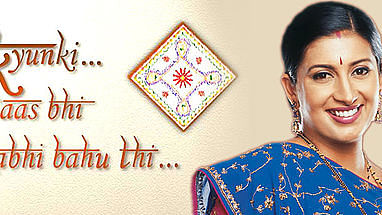
Of Nagins, Bhabis and Vamps: Indian TV Soaps Rock!
We need to thoroughly rethink our daily TV drama. Here’s why.

advertisement
The man in the hospital bed shifted his body slightly and stifled a groan. The nurse in charge of the ward got up from her table and came down to him. She shifted his pillows and moved him to a more comfortable position.
He was in a state of seething rebellion and bitterness; his third wife had cheated on him with his younger brother who was an icha dhaari naag. The man tried to kill both of them. However, the naag ended up biting him.
Sounds familiar? It is because 99% of Indian television soaps are loose derivatives of this theme. Welcome to the regurgitated world of Indian TV.
The Big Indian Fam-Bam
Soap operas dominate prime time on our television and the mother-in-laws reign in almost all of them. However plucky the heroine or serpentine the plot, every love story seems to circle back to marriage and the many relatives who come with the words “I do”.
Relatives, joint families, family businesses and arranged marriages form the bedrock of our soaps. Some take a step forward – they touch upon an unhealthy social practice and package it tastelessly. Most of the times the episodes reinforce the stereotype that it had sought to dismiss.
Ballika Vadhu, for instance, is one of the most widely-consumed shows in India. It, however, is a frail attempt at questioning the existence of child marriage. Throughout the season, it perpetrates the evil and concludes each episode with a one-line-message to eradicate child marriage; perhaps suggesting that you may indulge in child marriage, no one’s gonna stop you, we’re doing this series to feel cool.
Primetime Telly
8 pm channel flipping on Indian TV is like watching myriad of emotions on a PowerPoint presentation – red saree clad women immersed in sindoor from head to toe. Man slapping a woman, marital rape, women turning into icha-dhari nagins and countless other mind-numbing activities. The one link that all the emotions have in common is the kitchen-sink depiction of women. Their portrayal is weaved around a man, or with respect to one.
9 pm primetime is particularly important in India. Some cry themselves hoarse demanding “answers” from “anti-nationals” and some on the other hand, practice female infanticide unabashedly. Practicing casual dating maybe a taboo but a woman being traded from one family to another, from one man to another is completely acceptable.
Grow out of Sindoori Women?
The obsolete ideals of women being the child-bearers and the “honour”-bearers of the family and society at large need to be re-thought, especially in Ekta Kapoor-ish saas-bahu sagas. When asked the reason why Kapoor still indulges in archaic themes, this is what the businesswoman told Mid Day:
How often do you encounter icha-dhaari naagins as your neighbours or your friend’s father who is a tantric or a man who has several wives and one of whom willing even go to pataal to bring him back? Never, I hope. Then one wonders what kind of research Kapoor is talking about. Her target group seems skewed, and her analysis, poor.
Since Indian TV dosen’t seem to elevate itself from the drudgery of daily soaps anytime soon, here are some useful suggestions for you:
Spice It Up With Different Genres and Not a Woman’s Sex Life!
By genres, we mean thriller, comedy, tragedy, suspense. What we have now is a single track saga of kitchen-sink drama.
Better Research, Please!
What I saw in Reporters, the Indian rip-off of Newsroom, staring Rajeev Khandelwal, moved me to tears. The sitcom was so abysmally conceptualised that it barely survived on TV for a year (we’re talking about an audience which has the endurance capability of decades).
Concentrate on Content, NOT on a Woman’s Inter-Personal Relationships
If you crib about how Indian TV lacks viewership of the youth, here’s a tip: make soaps that appeal to them. Running regressive nonsense on repeat is never going to build a strong hold in the 18-30 age bracket.
There Is Something Called a Timeline, Stick to It!
Kyunki...Saas Bhi Kabhi Bahu Thi ran for almost a decade, along with siblings called Kahaani Ghar Ghar Ki and Kasauti Zindagi Ki. A Sach Ka Samna still made sense as it had a certain agenda at hand with a focused approach. It was termed as salacious and shocking, yet it blew the lid off Indian hypocrisy. So the key to success is clarity and closure.
Actors Acting in Regressive Sitcoms Should Practice Restraint
If you are jobless and a particular soap is your only saving grace, you should at least maintain a standard. Regurgitating an unsavoury piece of content is not going to give you satisfaction, accept it.
We are a population of over one billion people. If we fail to entertain each other by creating magic on stage or on television, then we will soon be grappling with mediocrity.
Lastly, I shall leave you with a poignant quote by popular culture theorist, John Fiske:
If you ask people who work in Indian television about the sad state of affairs, they will blame the audience. It’s an open question: is the audience really that dumb or is television underestimating our intelligence?
(At The Quint, we question everything. Play an active role in shaping our journalism by becoming a member today.)
- Access to all paywalled content on site
- Ad-free experience across The Quint
- Early previews of our Special Projects
Published: 14 Mar 2016,09:05 PM IST